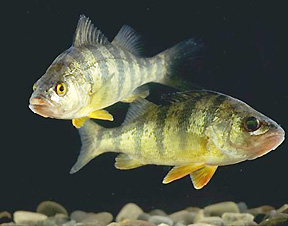Chesapeake Bay's Independent Newspaper ~ Since 1993
1629 Forest Drive, Annapolis, MD 21403 ~ 410-626-9888
Volume xviii, Issue 5 ~ February 4 - February 10, 2010
Home \\ Correspondence \\ from the Editor \\ Submit a Letter \\ Classifieds \\ Contact Us
Best of the Bay \\ Dining Guide \\ Home & Garden Guide \\ Archives \\ Distribution \\ Advertising![]()


 |
Fish Are BitingThe yellow perch run is poised to start in earnest. Use minnows and grass shrimp on spoons and shad darts, in the shallow headwaters of our tributaries, is the way to catch this first fish of the season. Use good sense and release unspawned females. We are still in the process of rebuilding our yellow perch populations. White perch remain schooled in deep water around the main Bay and are taking small jigs and bloodworms on the bottom. In SeasonBow season for deer and the waterfowl seasons ended with January. Small game season remains open thru February. Quail ends February 15. The special snow goose season runs February 1 thru April 17. A $5 permit is required in addition to the regular hunting license and state and federal waterfowl stamps. If the numbers of these geese are not reduced substantially (they are at 200 percent of their historical population high), the species could collapse from nesting ground depredation. DNR NotesThe commercial gill net fishery for striped bass, which opened January 1, was closed January 11 because catch were running so high that the commercial quota would have been reached before month’s end. Gill netting was reopened January 18 with a reduced quota per harvest permit of 300 pounds daily (from 500 pounds) and a vessel limit of 1,200 pounds. Fishing was also restricted to Monday thru Wednesday. The commercial fish market price for rockfish in New York (where Chesapeake Bay-caught fish are sold) had plummeted because of the glut of fish harvested in Maryland. This is the same fishery for which Maryland Department of Natural Resources is about to approve a marked increase in allowable gill net length, so these fish can be caught even faster. Historically, the gill net fishery is the one commercial operation most prone to abuse. The commercial gill net season runs until the end of February. Comment on this bizarre reasoning at |
Ready for the Run
Lengthening days stir both fish and anglers
Two light spin rods with reels, cleaned, oiled and filled with fresh monofilament, are leaning next to my front door. A small tackle bag is there, too, filled with light spoons and shad darts in bright colors. Bobbers bulge the side pockets, and hand warmers and extra gloves are tucked inside. My minnow bucket, scrubbed clean for the new season, is right next to them. I am ready to go.
The amount of sunlight and warmth beaming upon us in the Tidewater has been steadily increasing for over a month. The date that marked the darkest day of the year, the day when our northern hemisphere was farthest from the sun and our nighttime the very longest, was December 21, 2009.
The gradual lengthening of our days since winter solstice is stirring both the fish swimming in our waters and the anglers longing to pursue them.
 Among the very first to respond to the increasing daylight are yellow perch. By now they have already begun to experience a radical change in their bodies and their habits. The urge to spawn is upon them.
Among the very first to respond to the increasing daylight are yellow perch. By now they have already begun to experience a radical change in their bodies and their habits. The urge to spawn is upon them.
They are forming schools and moving out of their deep wintering grounds near the mouths of tributaries. Guided by their sense of taste and smell and a mystical navigational ability, they are moving higher up the rivers into the headwaters where they were born.
Female perch, their stomachs already bulging with roe, are staging in the deeper waters of the tributaries, awaiting a signal known only to them. When the time is right, they will travel in surges the last distance to their birthplaces. Spawning will last only a day or so. Then they head back downriver.
Traveling separately, the males are usually the first to make the journey all the way to the spawning areas. The smallest arrive first. Milt-laden and hormone-driven, almost all will wait somewhere in the headwaters over the next two months until the last of the females have journeyed up to their natal site and spawned out.
The initial stages of this phenomenon are caused by the increasing amount of daylight, but temperature drives the actual spawn. Optimum conditions involve a 50-degree range of water warmth.
But time of day, cloud conditions, air temperature, rain, wind and the variable depths and current speeds of the waters in the streams will all combine to produce this temperature range, sometimes under the most unlikely circumstances. Thus it is virtually impossible to predict when the fish are going to be moving and active in any particular piece of water. It will happen when it happens, and you’ve just got to be there when it does.
For an angler, this means that some trips, especially the early ones, will be fruitless. You’ve got to expect that, and it makes finding the fish, at last, so much more rewarding.
© COPYRIGHT 2010 by New Bay Enterprises, Inc. All rights reserved.